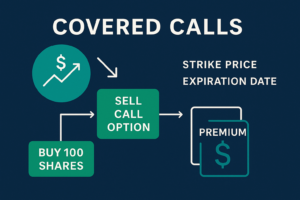Introduction
Could we one day separate pharmacy coverage from insurers entirely? It’s a radical idea, but as healthcare innovation continues to evolve, the question deserves exploration. Traditional pharmacy benefit models are deeply entrenched in insurance frameworks, but alternative approaches are emerging that could challenge the status quo. This article examines the feasibility, challenges, and potential implications of an insurer-less pharmacy ecosystem.
Alternative Risk-Bearing Models
In an insurer-less pharmacy ecosystem, risk-bearing would shift from traditional insurers to alternative models. These could include:
- Captive Insurance: Employers could create their own insurance entities to cover pharmacy expenses, keeping control of risk and reducing reliance on external insurers.
- Risk Pools: Employer cooperatives could pool resources to collectively manage pharmacy benefit costs, spreading risk across a broader base.
- Direct Contracting with Manufacturers: Employers could bypass PBMs and insurers altogether, negotiating directly with pharmaceutical manufacturers to secure transparent pricing and volume-based discounts.
These models decentralize risk, offering more control and transparency for employers and potentially lowering costs.
Implementation Barriers
Despite its appeal, implementing an insurer-less pharmacy ecosystem comes with significant hurdles:
- Regulatory Complexities: Health coverage regulations, such as ERISA (Employee Retirement Income Security Act), are heavily entwined with insurance-based pharmacy benefits. Navigating these regulations would require careful compliance measures.
- Large Capital Requirements: Establishing captive insurance or risk pools demands significant financial investment, which may be prohibitive for smaller employers. Regional health plans and vertically integrated national payers have substantial liquidity and can handle, model and absorb extensive risk.
- Need for Reinsurance: To protect against catastrophic pharmaceutical expenses, employers or cooperatives would need access to reinsurance markets, adding another layer of complexity.
Addressing these barriers requires systemic collaboration between employers, regulatory bodies, and technology innovators.
Scenario Forecast
While a fully insurer-less pharmacy ecosystem may seem far-fetched, small-scale pilots could pave the way for larger disruption.
- Small-Scale Pilots: Innovative employers and coalitions could test captive insurance or risk pools in controlled environments, gathering data to prove the concept.
- Technology Enablers: Blockchain technology could ensure transparency in drug pricing and distribution, while AI could streamline risk modeling and claims processing.
- Large-Scale Disruption: If successful, these models could eventually scale to challenge traditional insurance frameworks, potentially unbundling pharmacy benefits entirely.
The success of these pilots would depend on demonstrating cost savings, operational feasibility, and improved member satisfaction.
What This Means for PBMs and Payers
If pharmacy coverage were to unbundle from traditional insurers, the ripple effects on PBMs and payers would be profound:
- PBMs: With employers and cooperatives managing their own formularies, PBMs would need to reinvent their value proposition, focusing on technology and analytics rather than gatekeeping.
- Insurers: Without pharmacy benefits, insurers might focus exclusively on medical coverage, losing a major revenue stream and strategic influence in healthcare markets.
These shifts could realign the power dynamics of healthcare, opening the door to greater transparency and competition.
Conclusion
While an insurer-less pharmacy ecosystem is not an immediate reality, it’s a provocative concept worth exploring. As the pharmacy benefits landscape evolves, new models like captive insurance and risk pools could drive innovation and disrupt traditional frameworks. For employers and stakeholders, the challenge lies in balancing risk, regulation, and resources to make this vision viable.
FAQ
Q: What is an insurer-less pharmacy ecosystem?
A: An insurer-less pharmacy ecosystem is a model where prescription drug coverage is managed independently of traditional insurers, often through alternative risk-bearing structures like employer cooperatives or captive insurance.
Q: How would employers benefit from this model?
A: Employers could gain greater transparency and control over pharmacy benefit costs, negotiate directly with manufacturers, and potentially lower expenses.
Q: What are the biggest challenges to implementing this model?
A: Key challenges include navigating complex regulations, securing large capital investments, and ensuring access to reinsurance for catastrophic drug expenses.
Q: Could PBMs adapt to this new model?
A: PBMs would need to pivot from traditional gatekeeping roles to offering technology-driven solutions, such as analytics, formulary management platforms, and supply chain optimization.
Q: Is this a realistic vision for the near future?
A: While full implementation is unlikely in the short term, small-scale pilots and incremental innovation could gradually move the concept closer to reality.








